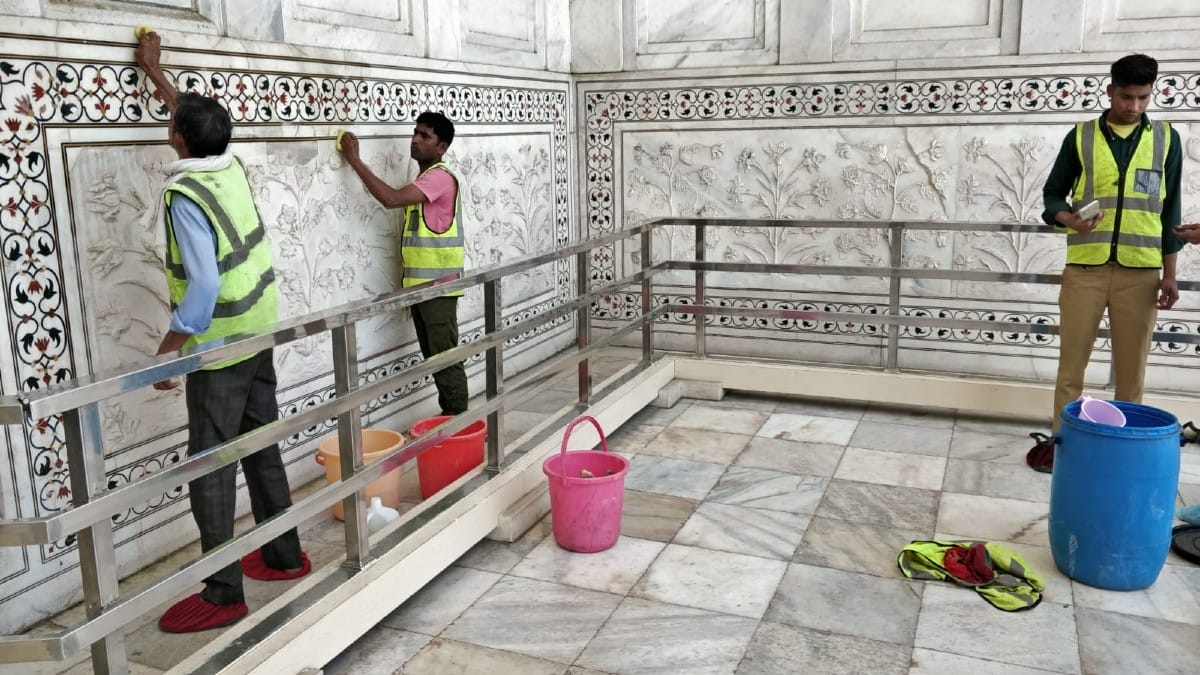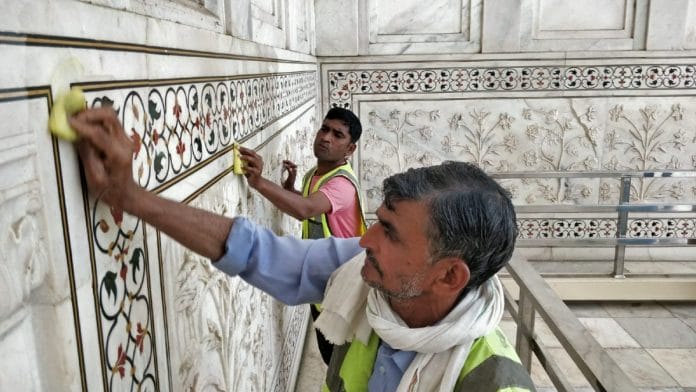Agra: Teams of workers from the Archaeological Survey of India (ASI) were spotted at the Taj Mahal Saturday, scrubbing insect droppings off its pearly surface, days after ThePrint highlighted the issue in a report.
Among those tasked with cleansing the outer marble surface of the 17th Century monument were experts from the ASI’s Science Branch who evaluated the damage and recommended treating it with water and cotton.
In a report last week, ThePrint had highlighted how the outer surface of the Taj Mahal was turning green due to the accumulation of excreta of an insect species — Goeldichironomus. This insect species, experts said, breeds in the sewage-filled waters of the Yamuna.

ASI’s chief assistant conservator at the Taj Mahal, Prince Vajpayee, told ThePrint that members of the Science Branch washed the affected parts of the monument with clean water before delicately scrubbing away the green spots using cotton. Following a thorough cleaning, the surface was dried and polished with cotton to restore its sheen.
While confirming that there are no green spots on the monument’s marble surface anymore, Vajpayee stated that there can be no guarantees that the green spots would not reappear since the temperature continues to rise and this is the ideal time for the breeding of the insect species responsible for it.
The spots eventually turn greyish-black if not cleared, he said.
Vajpayee further explained, “Unless the Yamuna is cleaned and these insects are eradicated with a regular flow of clean water in the river, these spots will continue to reappear at the Taj Mahal, and now the ASI will be conducting routine inspections of the marble surface of the monument to clean these green spots as they start to appear so that the monument does not appear unsightly from these spots.”
“There are parts of the Taj Mahal that are especially vulnerable to the attack of these insects, such as the north-eastern minaret, and these parts will be cleaned on a regular basis,” he added.
(Edited by Amrtansh Arora)
Also Read: A temple in the Taj Mahal? What Mughal-era documents tell us about tangled claims






